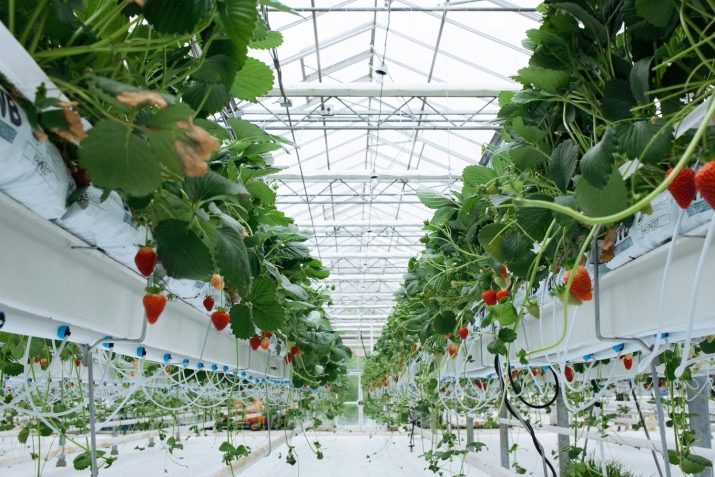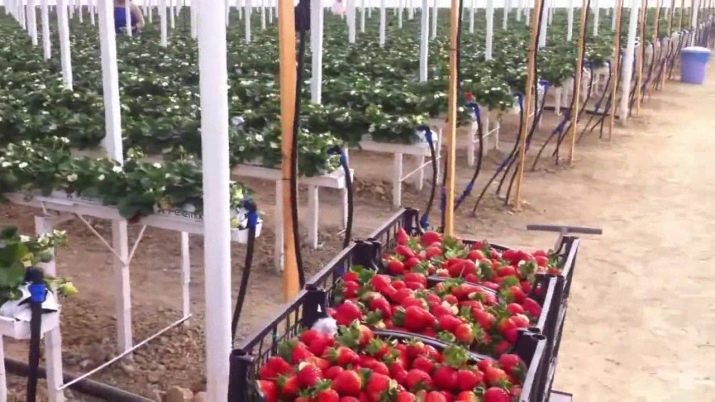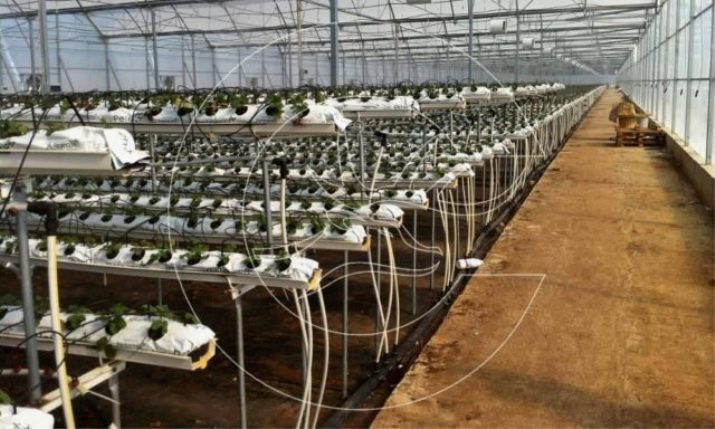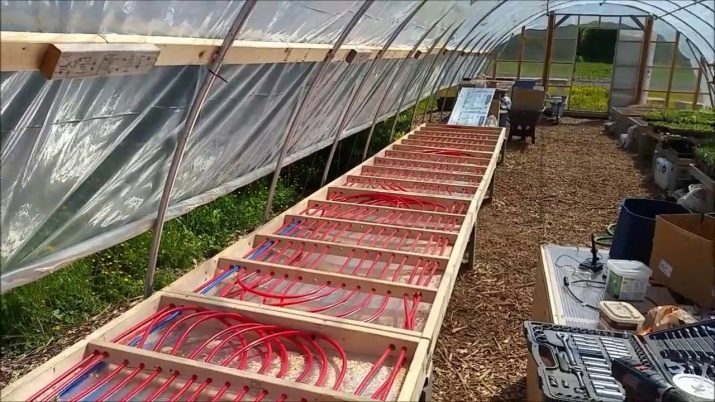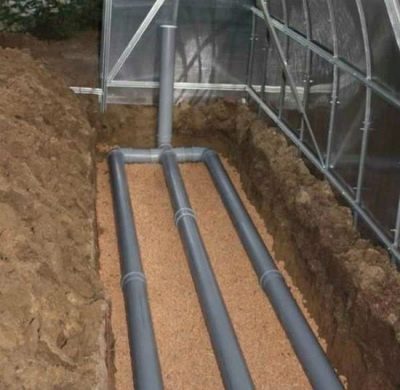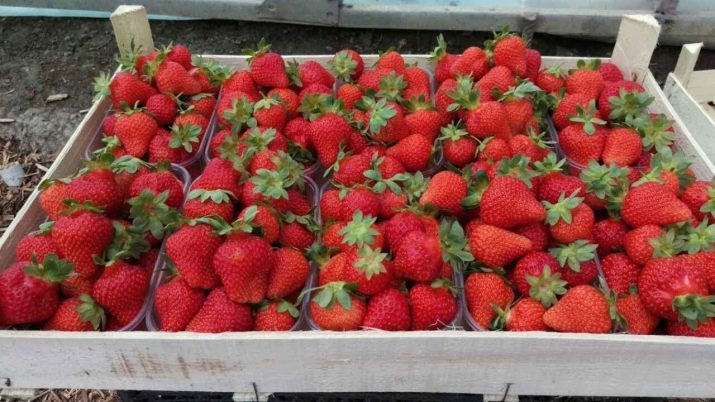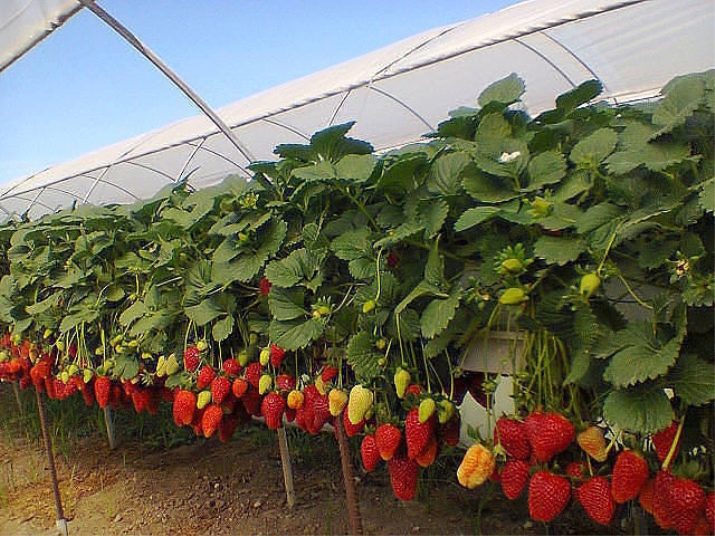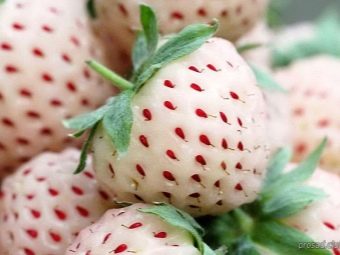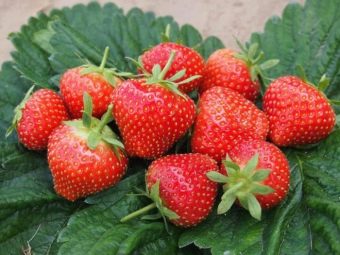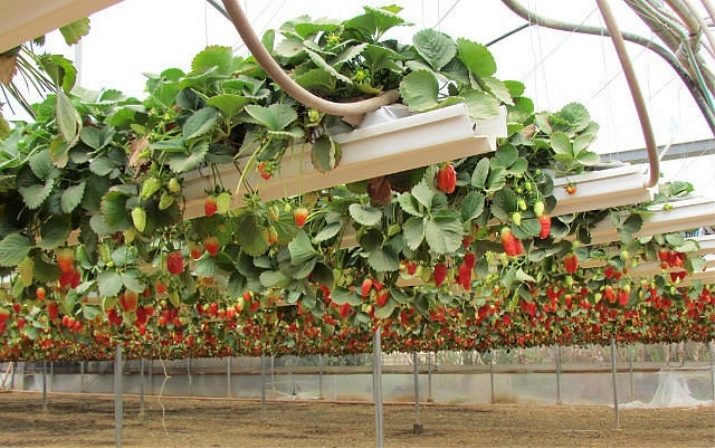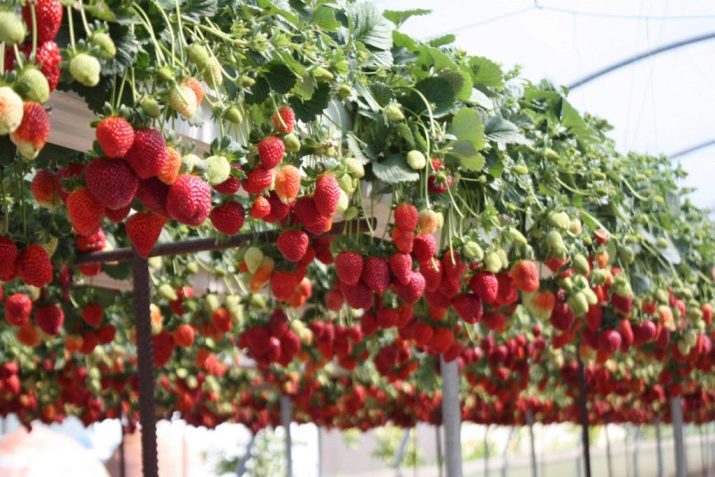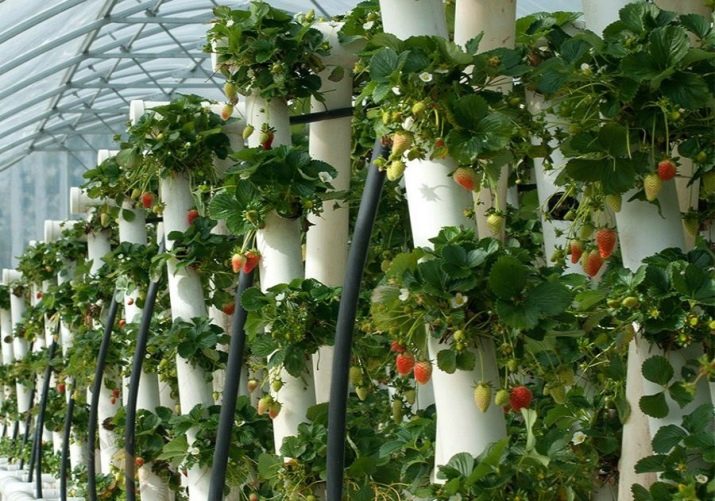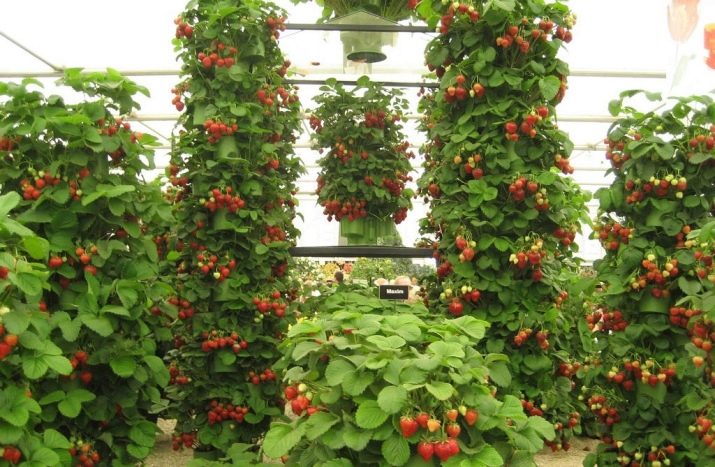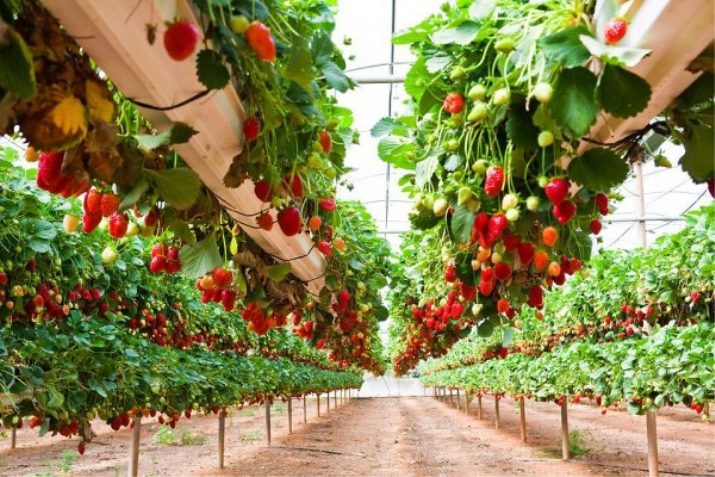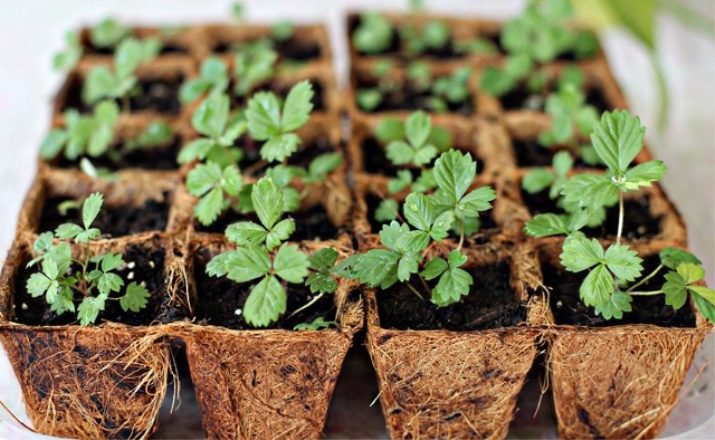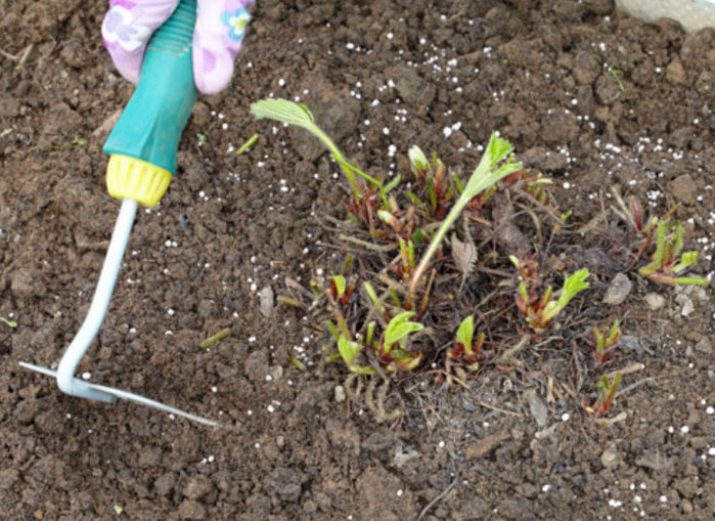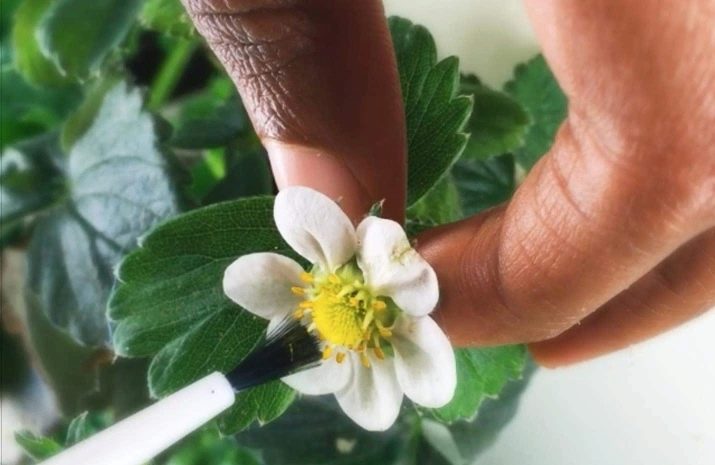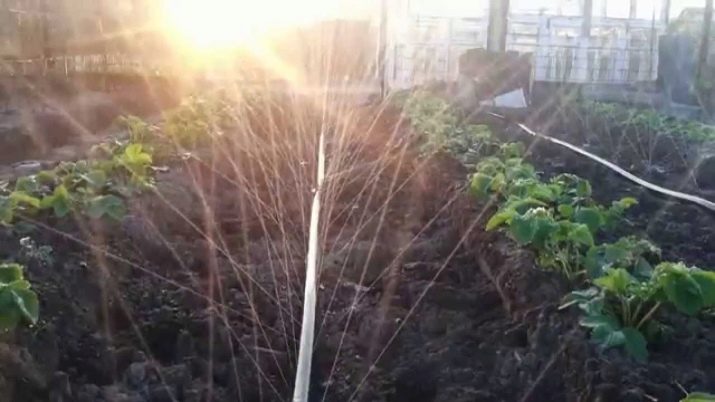Growing strawberries in a greenhouse: selection of varieties and planting technology
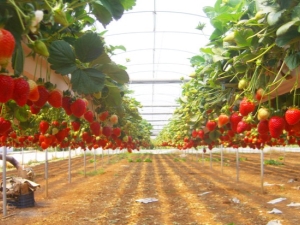
Strawberry is a tasty and sweet berry. But in order to get its harvest longer, in Russia it is often necessary to grow it in a greenhouse. And it should be done correctly, taking into account all the nuances and subtleties of such a method, and carefully selecting varieties.
Advantages and disadvantages
There is no doubt that the cultivation of strawberries in greenhouses can protect it from the negative effects of weather conditions. That is, neither bad weather, nor a temporary return of frosts or prolonged rains will be dangerous for it. In addition, it is more difficult to get into the greenhouse for pests and birds, various animals that want to eat the crop. There are created completely human-controlled conditions. It is possible to regulate not only the thermal regime and humidity, but also the condition of the soil, its chemical composition.
But there are serious problems. So, growing strawberries even in the best greenhouses, albeit a bit, but limits its insolation. Even worse things are with ventilation. There are certainly well-ventilated structures, but they are noticeably more expensive than ordinary greenhouses. In addition, care for watering falls entirely on gardeners, they can no longer rely on the natural assistance that rain and dew provide.
Prerequisites and requirements
When equipping a greenhouse, one should strive to ensure that strawberries can grow all year round, even in winter. For this purpose only stationary structures erected on the foundation are used. They must be glazed or made of polycarbonate. Additionally, the winter greenhouse construction, including the one built by own hands, should contain:
- means for enhanced lighting;
- heating equipment;
- ventilation accessories
- moisturizing and watering equipment.
There are various options for heating greenhouses. The choice between them is determined by:
- arrangement of the structure;
- the cost of certain types of heating;
- features of the site;
- composition of cultivated crops;
- climatic features;
- engineering infrastructure on the site.
Heating greenhouse buildings in the cold season can be, if you lay a pipe there. Already at the design stage it is necessary to think about the electrical infrastructure. Without it, it is impossible to establish the normal operation of the fluorescent lamps. It makes sense to immediately invest in high-quality lamps, and not to purchase products of dubious origin. In the winter months, it is necessary to ensure heating to 22-24 degrees, and the duration of the backlight should sometimes be up to 14 hours.
Yield indicators
The number of berries harvested from 1 m2 depends primarily on the method of planting bushes. Gardeners with experience can collect 60 kg of fruit per year from such an area. But novice farmers should be considered a great success, and 30 kg per 1 square. m. The maximum yield per plant in ideal conditions can be 4 kg.
Early high quality varieties can produce 0.4-0.5 kg of berries in one fruiting. Such a result is quite achievable even without any sophisticated measures. But those who want to get the most out of their landings must strictly adhere to the norms of agricultural engineering. A year-round working greenhouse is able to produce up to 4 crops per year. Much more depends on the selected variety.
Selection of suitable varieties
In the greenhouse, it is recommended to grow self-pollinated varieties of strawberries. Experts say that the highest chances of success are when using several types at once. According to experts, some of the best are DSD varieties, which are:
- they pollinate themselves;
- depend little on the duration of the backlight;
- able to give several yields in one year.
From the achievements of Russian breeders can confidently be called "Pineapple", "Corona", "Elizabeth". Foreign developers also managed to produce quite good varieties of strawberries - “Elsantu” and “Sonata”. It is necessary to plant either purchased in professional nurseries, or planting material grown from seeds by own efforts.Before planting, the land must be enriched with humus, regardless of the selected variety.
It is also advisable to read the reviews of other farmers and information from the state register.
Technologies and agricultural technology
The Dutch way is good because it allows you to get the harvest all year round, even in relatively poor conditions. Berries will not come into contact with the ground. Plants grown according to this method must be planted in various containers. This approach eliminates a number of problems and loss of presentation. Saplings are planted approximately every 45-60 days, when the successful fruiting of the previous ones is completed.
The Dutch strawberry cultivation is good for keeping performance at a consistently high level. But full-fledged conditions for the development of plants should be created. We will have to systematically, according to a verified schedule, feed them. Even gourmets and experienced tasters will surely like the taste of the collected fruits. It will be possible to extract the maximum benefit from a limited area.
In the greenhouse the best types of strawberries are:
- "Maria";
- "Darkness";
- "Baron";
- "Sonata";
- "Selva".
But we must understand that the Dutch technology also imposes strict requirements on the farms themselves. They must be consistently provided with planting material. For growing plants within a small farm is best to prepare this material on their own. You also have to take care of high-quality lighting and rational microclimate. Some professionals believe that in the greenhouses special lamps should be used to support the plants, giving a close to the natural radiation spectrum.
Watering the land in Dutch-type greenhouses is often done using drip technology. Its advantages are:
- further reducing the risk of fungal infection;
- reduction of evaporative losses;
- lack of weed support;
- minimum energy and water costs;
- the ability to synchronize watering and fertilizing.
Netherlands greenhouse must have thorough ventilation. Only then will it be possible to avoid defeat by rot and improve the taste characteristics of the fruit. Normal thermal regime - from 18 to 25 degrees. But with active flowering, the air must be stably heated to 21 degrees. Both excess and low temperature affect the plants negatively. The recommended level of humidity is from 70 to 80%.
For maximum space saving, vertical cultivation of strawberries in greenhouses is often recommended. It helps to maintain cleanliness and prevents the harmful effects of dampness. Strawberries grown in this way are unattainable for the main part of pests. It will be extremely difficult to crush it and weeds. It should be remembered that watering the beds will have more often (they dry faster), that it will be necessary to introduce only liquid dressings.
Vertical beds in cold winters easily freeze. Therefore, it is necessary either to take care of powerful heating and reliable insulation, or to move the plants into the house. Plant berry culture vertically possible in plastic bottles, pipes or in barrels. If small tanks are used, hydrogel should be used. Thanks to him, the frequency of irrigation can be slightly reduced.
In greenhouses, strawberries are also grown hydroponically. In this case, special substrates are used, which actively absorb moisture and become a mechanical support for the root system. All materials used contain a significant amount of pores. Farmers are able to fully control exactly what nutrients to the roots and how much. Water is optimally used, even a small part of it is not wasted.
Hydroponics allows you to completely abandon the use of herbicides and other toxic chemicals. After all, the plants, in principle, do not get any pests or weeds.As a result, the vitality of the culture grows significantly. Its overall performance also increases. But the timing of the first crops significantly reduced.
But it is important to understand that hydroponics is not a panacea. For optimal results, the farmers themselves must be prepared theoretically and practically. Large volumes of special solutions will be required. The slightest mistake is difficult to fix, because unlike the soil, the substrate is not able to regulate the composition autonomously, without human intervention. It will be necessary to strictly maintain the required air temperature.
Strawberries on racks are mainly grown by those who wish to sell it in significant quantities. This approach allows for a quick return on investment. If everything is done correctly, it will be possible to compensate for the initial investment and break even for the whole season. The level of profitability can reach from 75 to 100%. But for ordinary gardeners, this approach is unnecessarily complicated.
Landing
Attempting to grow strawberries in a greenhouse for beginner farmers often seems very difficult. But in fact, if you choose the optimal approach and strictly follow the basic principles, problems are almost excluded. Most often for the cultivation of delicious berries use designs made of polycarbonate. They give excellent results in a variety of climatic conditions, in all Russian regions without exception. Classical soil planting assumes a distance between early plants of about 150 mm, and between middle and late varieties - 200 mm.
The gap between the individual beds can be 300 mm. The depth of the holes reaches 0.25–0.3 m, and their average diameter is 0.25 m. It is necessary to sprinkle the roots gently with soil and immediately water it abundantly. Poured on the ground cover mulch. As its recommended needles, straw and sawdust.
The mulch layout should be uniform for all plants. Instead of organic substances, agrarian fiber is sometimes used.
The best mulch substitutes are black. Such materials pass air well, but maintain a peculiar greenhouse effect. Covering material additionally protects the landing from parasites.
Care and protection from diseases
To grow a good harvest, it is not enough to cover the strawberries in the greenhouse from the influence of the weather. Special care will be required, the provision of which starts from spring days. Preparing seedlings involves growing them first in clay tanks, and then in free land. For the first 7 days after planting in the greenhouse, the daytime temperature should not be below 7, and the nighttime temperature should not be below 3 degrees. In this case, we should not forget about the systematic ventilation.
As soon as the first, most difficult, period is completed, it is required to systematically increase the heating. The temperature is raised gradually, so that so that on the 30th day of cultivation by day and night it was 14 and 12 degrees, respectively. The recommended humidity level is 75%. To get rid of dried air, from time to time the earth is sprayed.
In the greenhouse it is necessary to lure the bees, even if the declared varieties are used as self-pollinated.
The preservation of a decent sanitary condition of landings is extremely important. For perennial plants (and strawberries are precisely among them), smooth replacement of old foliage with new leaves is characteristic. Because you have to use pruning. In autumn, 100% of the leaves should be removed so that the plant can redirect all its energy to the development of the roots. This technique allows you to increase the resistance to frost and finally avoid damage by pests and infections.
If the terrain is characterized by a harsh climate, pruning is done immediately after collecting the last fruits in due time. It is not recommended to wait for the backward berries to develop. Experienced farmers advise to get rid of foliage to the ground. Everything that is cut is burned. Ridges necessarily treated Bordeaux liquid.
The end of pruning does not mean that you can stop care. On the contrary, after it the plants are watered and fertilized. Up to a full-fledged beginning of winter, the land needs to be loosened. With regard to disease prevention, the main danger for greenhouse planting is gray rot. First of all, the disease affects the leaves, but soon its manifestations can be seen on the berries.
It is very important to inspect the bushes whenever possible. Any infected berry must be immediately destroyed. If the infection has infected a whole bush, it can no longer be saved. It remains only to get rid of the problem plant in order to exclude the transfer of the pathogen to the healthy parts of the beds.
For pollination in greenhouses, bumble-bee hives are occasionally installed. But this method creates a big risk for the owners of the site and other people for pets. Therefore, it is much more common to use simple brushes to transfer pollen. Or sent in the direction of the peduncle air jets, which drives a home fan.
Watering strawberries in a greenhouse can be drip method, by sprinkling or auxiliary irrigation. Sprinkling is carried out only before flowering. As soon as the flowers are formed, watering becomes permissible only under the root and in the intervals of foliage. Moistening frequency - 1 time in 10 days. When the fruiting is over, it is necessary to supply the strawberries with moisture as needed.
In any case, you can not get involved in watering, to prevent the defeat of fungi.
Before irrigation, berries are harvested. When the shrub is watered, they immediately loosen the ground. Violators of this rule themselves are punished by a decrease in yield. The rational feeding for the first year consists of 400 g of cow manure and 30 g of ammonium. Both components are diluted in 10 liters of water.
On 1 plant 1 l of the prepared mix is spent. In the second year of life, strawberries consume the same mixture. However, before dressing the ground sprinkled with wood ash. On 1 square. m surface use 400 g of ash. And even easier to mix 10 liters of water with 10 kg of nettle and make the infusion.
How to grow strawberries in the greenhouse, see below.

